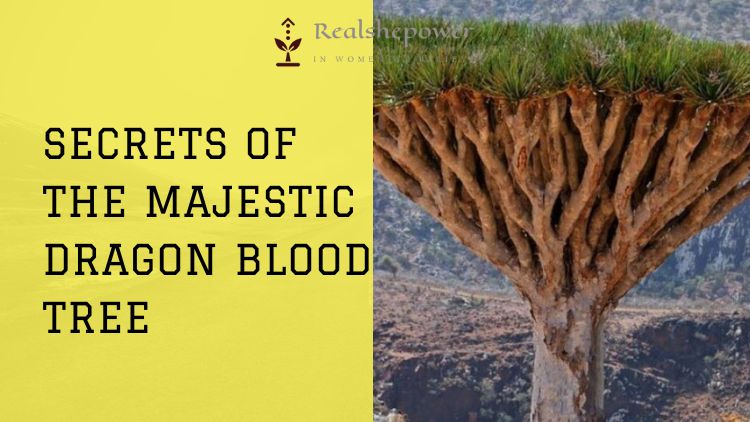The Majestic Dragon Blood Tree: An Overview


The Dragon Blood Tree, also known as Dracaena cinnabari, is a species of tree that is found exclusively on the island of Socotra, located off the coast of Yemen. With its unique and striking appearance, the Dragon Blood Tree has captured the imagination of people for centuries, and it continues to be an important species both ecologically and culturally. In this article, we will take a closer look at this majestic tree and its significance.
Appearance and Ecology
The Dragon Blood Tree is an evergreen species that is known for its distinctive, umbrella-like canopy and its vibrant red sap, which gives the tree its name. The tree can grow up to 15 meters tall and can live for hundreds of years. Its branches are covered in small leaves, and it produces clusters of small, white, fragrant flowers.
The Dragon Blood Tree is an important species ecologically, providing habitat and food for a variety of birds, insects, and other wildlife. It is also a keystone species, meaning that it plays an important role in shaping the ecosystem of the island of Socotra. The tree is well-adapted to the harsh conditions of the island, which is characterized by high winds and little rainfall.
Cultural Significance
In addition to its ecological significance, the Dragon Blood Tree is also an important species culturally. For centuries, the tree has been used for a variety of purposes, including as a source of food, medicine, and dye. The red sap of the tree is considered to have medicinal properties, and it has been used to treat a variety of ailments, including wounds, infections, and digestive problems.
The tree is also an important symbol in the cultural traditions of the people of Socotra. According to local legend, the tree is said to have been created from the blood of a dragon, which gave the tree its name and its red sap. The tree is considered to be a symbol of strength and resilience, and it is revered by the people of the island for its beauty and significance.
Key Takeaways:
- The Dragon Blood Tree, also known as the Dracaena cinnabari, is a species of tree found exclusively on the island of Socotra, located off the coast of Yemen.
- It is known for its distinctive, umbrella-like canopy and its vibrant red sap, which gives the tree its name.
- The tree can grow up to 15 meters tall and can live for hundreds of years.
- It is an important species ecologically, providing habitat and food for a variety of birds, insects, and other wildlife.
- The Dragon Blood Tree is a keystone species and plays an important role in shaping the ecosystem of Socotra.
- The tree is well-adapted to the harsh conditions of the island, which is characterized by high winds and little rainfall.
- The red sap of the tree is considered to have medicinal properties and has been used to treat a variety of ailments, including wounds, infections, and digestive problems.
- The tree is considered to be a symbol of strength and resilience and is revered by the people of Socotra for its beauty and significance.
- According to local legend, the tree is said to have been created from the blood of a dragon, giving the tree its name and its red sap.
- The Dragon Blood Tree is an important species both ecologically and culturally, and is worth preserving for future generations.
Did you know trees can communicate?

Two decades ago, an ecologist named Suzanne Simard “discovered that trees communicate their needs and send each other nutrients via a network of latticed fungi buried in the soil.” She has proceeded with her exploration to figure out how trees, utilizing parasitic filigrees, “send warning signals about
The Bleeding Trees: Uncovering the Strange Phenomenon of Trees That Bleed

The sight of bleeding trees is not only strange and unsettling, but it can also evoke strong emotions in those who witness it. The thought of trees – which are typically seen as strong and steadfast – being
The Baffling Mystery of the Reverse-Flowing Rivers: Nature’s Unlikely Phenomenon

What causes a river to flow backwards? The answer lies in the presence of an unusual combination of physical and geological forces that create a unique set of conditions. For example, some reverse-flowing
You can now write for RealShePower and be a part of the community. Share your stories and opinions with us here.

Some really nice stuff on this site, I love it.